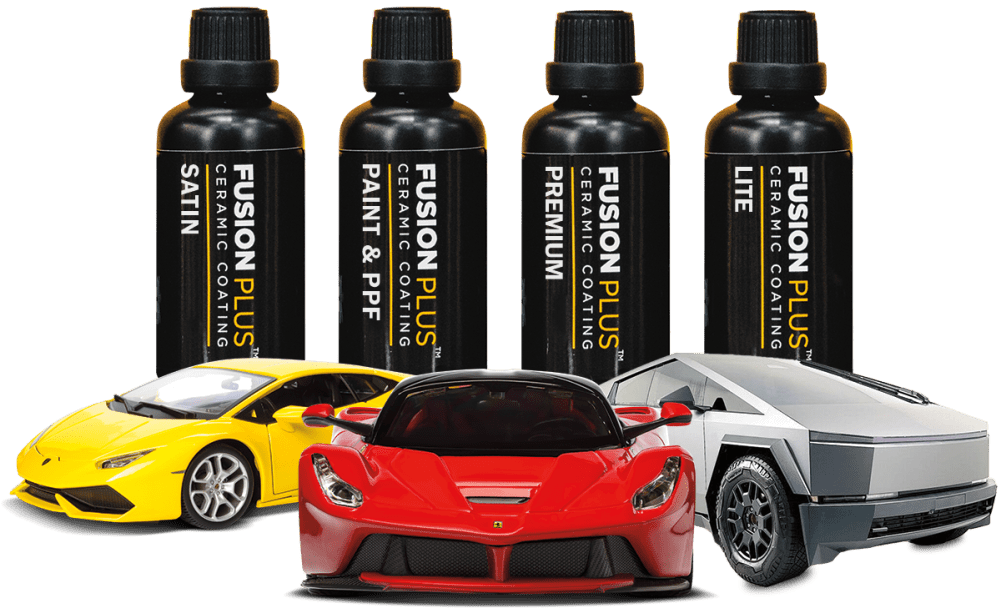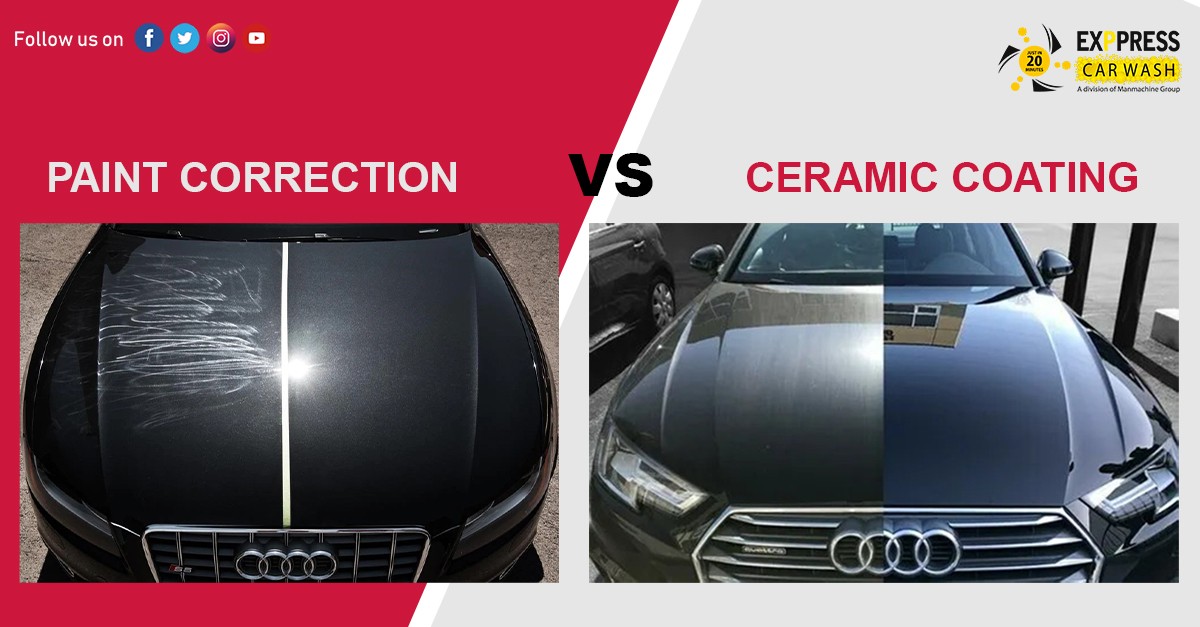The Duty of Ceramic Coating in Safeguarding Your Auto's Paint From Environmental Damage
Ceramic covering has actually arised as a sophisticated service for auto owners seeking to protect the stability of their lorry's outside. As we explore the nuances of ceramic finish, it comes to be evident that the choice to execute this protective procedure can dramatically affect your car's longevity and aesthetic.
What Is Ceramic Covering?
Ceramic layer is an advanced liquid polymer applied to the outside surfaces of an automobile, designed to offer a long lasting layer of security for the paint. This ingenious option develops a chemical bond with the automobile's manufacturing facility paint, producing a hydrophobic and durable shield. The finishing includes nanoparticles that fill out the microscopic imperfections in the paint, resulting in a smooth surface that boosts gloss and beam.
Generally, ceramic finishings are offered in various formulations, enabling various degrees of security and longevity. While some items can last for several months, others provide protection for several years, relying on the density of the application and environmental factors. The application procedure needs precise preparation, consisting of cleaning, sanitizing, and polishing the vehicle's surface area to make sure optimal adhesion of the layer.

Advantages of Ceramic Finishing
Among the main benefits of applying a ceramic coating is the exceptional security it offers to auto paint. This sophisticated coating develops a durable layer that shields the lorry's surface from a selection of environmental dangers, including UV rays, acid rainfall, bird droppings, and tree sap. By providing this durable protection, ceramic finishings significantly decrease the danger of fading and etching, protecting the vehicle's visual appeal gradually.
Along with protection, ceramic finishes are renowned for their hydrophobic buildings, which ward off water and dust, making it simpler to maintain a clean lorry. This self-cleaning effect decreases the regularity of cleaning, saving both time and resources. Ceramic finishes boost the depth of the paint's gloss, resulting in a refined and lively look that boosts the total appearance of the vehicle.
Another noteworthy benefit is the longevity of ceramic finishes. Unlike typical waxes or sealers that call for constant reapplication, ceramic layers can last several years, offering an affordable service for automobile owners looking for lasting defense. Overall, purchasing ceramic coating leads to boosted durability, reduced upkeep, and continual aesthetic appeal for automobile paint.
How Ceramic Covering Works
A ceramic coating runs via a chemical bonding procedure that produces a protective layer on the lorry's paint surface area. This cutting-edge remedy uses sophisticated nanotechnology, where microscopic fragments of silica are put on hold in a liquid kind - ceramic coating. Upon application, these fragments bond with the factory paint, forming a sturdy and hydrophobic layer that enhances the lorry's surface area
The main part of ceramic finishes, silicon dioxide (SiO2), contributes to the layer's strength and strength. When treated, the coating changes right into a difficult, glass-like coating that guards the paint from environmental impurities such as dust, UV rays, bird droppings, and tree sap. This molecular bond leads to a surface area that is not only immune to scratches yet likewise easier to cleanse, as dirt and crud are less most likely to adhere.
In addition, the hydrophobic buildings of ceramic finishes trigger water to grain and website link slide off, decreasing the opportunities of water areas and natural resource. This protective obstacle effectively extends the life of the paint and maintains the automobile's aesthetic allure, providing car owners a durable service for paint defense.
Application Refine of Ceramic Finishing
When thinking about the application of ceramic layer, preparation is key to attaining optimum outcomes. The initial step includes extensively washing the vehicle to get rid of dirt, gunk, and contaminants from the surface. This often includes a purification process making use of clay bars or chemical cleansers to make sure the paint is completely clean. Any flaws or scratches must be resolved at this phase, as the layer will bond with the surface area underneath.

Ceramic covering is then applied in small areas, typically using an applicator pad. It is crucial to work in also strokes, making certain consistent protection. The use this link finishing should be allowed to cure for a defined time, which can differ depending upon the product made use of. After the first application, a high-grade microfiber towel is utilized to buff the surface area, boosting gloss and making sure a smooth finish. Finally, the lorry needs to be delegated cure in a regulated atmosphere to allow the coating to totally bond with the paint.
Long-Term Maintenance and Care
Attaining a successful ceramic layer application sets the structure for long-term security, but appropriate upkeep is important to maintaining its benefits. Routine cleaning is crucial; using a pH-neutral car shampoo will assist keep the covering's honesty without causing damage. Prevent automated car washes that usage unpleasant products, as they can endanger the finish's surface.

In addition, using a ceramic coating upkeep spray can improve the existing layer, giving an added boost in protection and shine. It's a good idea to perform this every 3 to six More Bonuses months, relying on environmental direct exposure.
Finally, car parking in shaded areas or utilizing automobile covers can stop long term direct exposure to unsafe UV rays and ecological impurities, additionally prolonging the life of your ceramic coating. By sticking to these upkeep methods, you can guarantee your vehicle's surface continues to be safeguarded and aesthetically appealing for several years ahead.
Final Thought
In summary, ceramic finishing works as an important protective measure for automotive paint, efficiently shielding cars from a range of ecological hazards. Its capability to produce a robust hydrophobic obstacle not just enhances aesthetic allure however also significantly minimizes the frequency and intensity of maintenance needed. The durable nature of this innovative polymer underscores its value in maintaining automobile integrity and look, eventually contributing to an extra visually appealing and long lasting auto coating.
Ceramic finish is a sophisticated fluid polymer used to the exterior surface areas of a vehicle, made to offer a durable layer of security for the paint. Ceramic coverings boost the depth of the paint's gloss, resulting in a vibrant and polished appearance that elevates the total appearance of the car.
A ceramic layer operates via a chemical bonding process that produces a safety layer on the car's paint surface area.The main element of ceramic layers, silicon dioxide (SiO2), adds to the finish's stamina and durability.In summary, ceramic covering serves as an essential protective procedure for automotive paint, efficiently securing vehicles from a variety of ecological hazards.